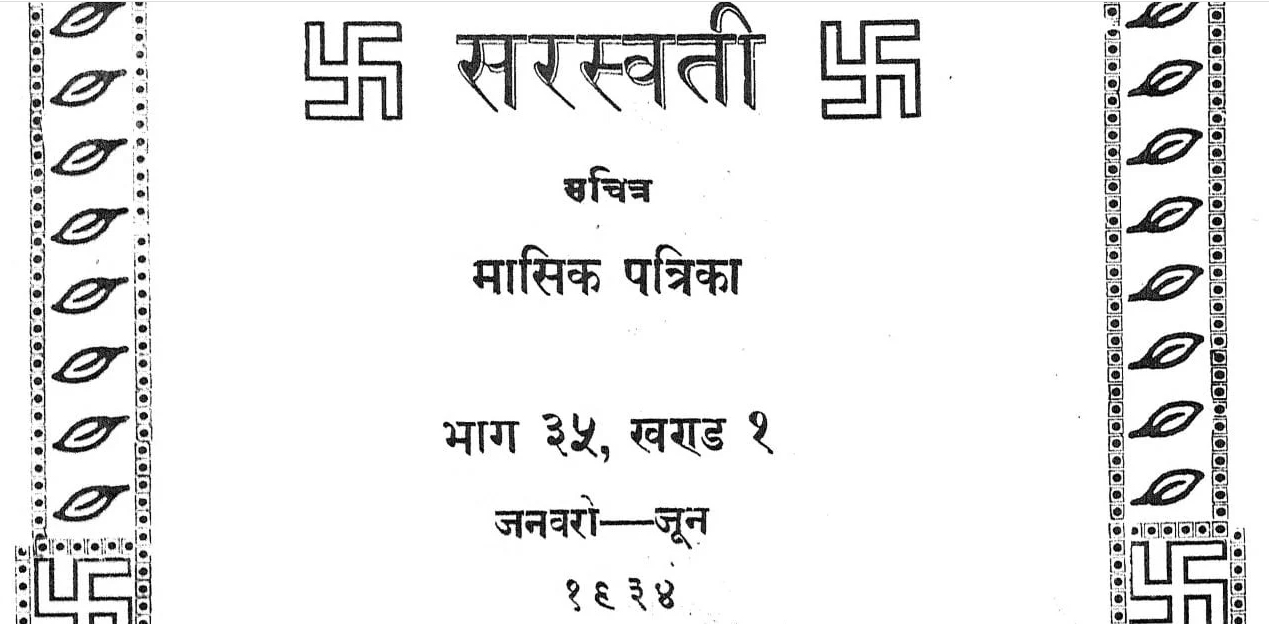Before 1 April 1912, what are today Bihar, Orissa and West Bengal were all part of the Bengal Presidency. On that day, the British separated Bihar from Bengal while present-day Orissa continued to be part of Bihar. On 1 April 1936, Orissa was made a separate entity. This division might have changed the political map, but the cultural map remained unchanged. Both states (three, rather, after Jharkhand was carved out of Bihar in 2000) have similarly abiding cultural traditions. The remnants of Asur-Adivasi traditions can still be seen in these states.
First, a few questions and their answers. Have you ever thought about why the Buddha attained enlightenment in Gaya? This question is relevant because the land where he attained enlightenment was the kingdom of the Asur king Gayasur. Another fact is that the land where Nalanda University stood was the land of Jarasangh. According to Brahman literature, Rajgriha (Rajgir of today) was the capital of Jarasangh. A group of caves next to Gaya is called Vanaavar. These are linked to Vanasur and according to archaeological sources, were the resting place the ascetics of the Lokayat tradition.

Thus, according to Brahmanical mythology itself, Asurs inhabited the entire region of southern Bihar. The area abounds with proof even today that the Moolnivasis (original inhabitants) ruled over it. In Bihar’s Kaimur district, the idol of Daityara, an Asur, is still worshipped. The farmers hold the belief that Daityaraja protects their crops grown far away and so they pray to him and wear a black thread on their wrists in his name. They believe only the rule of Daitya will avert misfortune. In many regions of Bihar, Orissa and West Bengal, people light a diya in the name of Yama and pray to him a day prior to Diwali. The ritual holds that women light the diya at the entrance of their house a day before the Diwali new moon. It is the oldest woman of the house who does this – to “chase away poverty”. This also harks back to an Asur tradition in the region.
According to one Asur tradition in Jharkhand, people put dal in their diyas and light it on Diwali. The next day, they rub the oil that remains in the diya onto parts of their body. They pray to Bhainsasur on the second day after Diwali. Similarly, cattle rearers in Bihar worship their cattle a day before Diwali. Like the Asurs, they bathe their cattle and anoint them with oil. They then change their harnesses. Some even do their cattle up with garlands with colourful stones and bells. The similarities go deeper – like feeding their cattle and only then eating. These days, however, this ritual has gained political relevance. Now, on this day, many parties organize events where party leaders (especially of the Yadav caste) participate.
Another astounding similarity between the Asurs of Jharkhand and the cattle rearers of Bihar is that both sing Sohrais – folk songs sung during the harvest festival of Sohrai. Also, during the worship of Bhainsasur in Jharkhand and the cattle in Bihar, women do not usually participate. They don’t participate in the Sohrai festival (also called the Gai-daandh festival) either. In both the communities, men sing Sohrais in groups to the beat of the drums (maandar and dhol).
In Bihar and Jharkhand, Karma Parv is another important festival. Adivasis celebrate it to pray for a good paddy harvest each season. It is interesting to note that on this day, male members of the Adivasi community express their gratitude to the women in their homes and assist them in their work. In Bihar, the festival revolves around the brothers. Women observe a daylong fast and pray for the good fortune and prosperity of their brothers. Pertinently, no Brahmins are involved in the worship. The women use agricultural equipment as well as kush, a kind of grass, for the rituals.
This festival that celebrates the love between a brother and sister is celebrated on the day after Diwali. The activities involved are very similar to that of the Karma Parv. Jotirao Phule has written about this festival in his book Gulamgiri as well. According to Phule, on the day of Balipratipada (the day after Diwali), Moolnivasi women pray for their brothers and also pray for the return of King Bali. This festival is also called Godhan. The ritual involves the crushing of certain food grains to feed the brothers in the family. While doing so, the women pray for the death and subsequent rebirth of their brothers. This may be connected to the death-and-rebirth myth associated with King Bali.

The Asurs are nature worshippers. Their gods also are usually embodiments of nature. This tradition remains in the plains of Bihar, too. For example, in almost every village in the district one finds a Gaurayya Baba, a deity closely associated with the Asur tradition. Just outside the boundary of the village, the Baba is set up in the shape of a hill. Some villages make this structure out of mud while others even use cement to create something more durable. Akin to the belief about Mahishasur, Gaurayya Baba is considered the protector of the village. He is said to protect the village from every kind of difficulty. Moreover, people also create little mounds of cow dung and place them atop harvested crops so that Gaurayya Baba protects their crops.
Mahoba in Bundelkhand, Uttar Pradesh, has a tradition of praying to Mahishasur. Here, they use earthen mounds, just as they do in the rural areas of southern Bihar for Dhelhawa Baba. In southern Bihar, whenever people enter or leave the village, they remember Dhelhawa Baba, who is considered to be the protector of the village, and present a lump of soil to his memorial, the earthen mound. This tradition is representative of the Asur culture.
Another telling similarity between the Asurs and people in Bihar’s plains is that they consider their ancestors to be godlike and worship them on every important occasion. Thus, in the villages of the plains, each home has their own gods. These gods are called Manujdeva or Manushyadeva. The people believe that if a male member of the family passes away in their youth, he immediately becomes a Manujdeva and other members begin to worship him. All rituals in these homes begin with the worship of Manujdeva. In those rituals, he is served alcohol as an offering, too.
In Bihar, Bakhtaur Baba’s worship is a grand affair. It is quite similar to the festivities of the Asurs. Bakhtaur Baba is mainly worshipped by the Yadavs. The celebration is called “Badka Puja” as well. Again, Brahmins have no part to play in the ritual, which features the beating of the drums (maandar and dhol). It is believed that the Baba enters the bodies of the devotees, who then ask him for blessings. On this occasion, special food items made of ghee and milk and laddus made of rice and jaggery are distributed.
In the Magadh region, there are many stories associated with the Salana Puja. It is held in village temples each year. While Brahmins did not participate in this festival earlier, their presence of late has been noted. Village folk participate in this festivity. Seven aniconic structures already installed in the temple are worshipped. It is believed that they represent Devi’s seven sisters. In some places, they are said to represent Durga’s seven sisters and in some, the village deity and her sisters. Everyone in the community comes together for the worship. The women sing songs especially created for this event. This tradition also harks back to older Asur traditions. In their songs, the women praise the goddess’ looks and attire and pray to her for the wellbeing of their families and the entire village community.
Jat-Jatin is another symbol of the tradition of Bihar. This mythical couple appears in many forms in folklore. Dr Kauleshwar Rai, the famous historian of Bihar, says Buxar’s Tarkasur is a yakshini and that the trope of yaksha-yakshini (Jat-Jatin) is deeply connected to Buddhist traditions. They still adorn the walls of many ancient temples. Presently, at 1, Deshratna Marg, in Patna is the Jannayak Karpoori Thakur Memorial Museum, the main door of which is flanked by figures of Jat-Jatin. Karpoori Thakur, the former chief minister of Bihar, hailed from Pitaunjhiyaan (now Karpoori Gram) in Samastipur district, which is a part of the Mithila region. Mithila abounds with stories about yaksha-yakshinis. There are representations of Jat-Jatin in Sitamahri as well. The influence of the Asur tradition in these statuettes is noteworthy.

Similarities in the traditions aren’t limited to statuettes, gods and festivities. They extend to various dimensions of life, for example – rituals during wedding ceremonies. The Asurs of Jharkhand have a tradition of digging up some earth before marriages. They dig up earth from next to termite mounds and use it to build a small platform atop which the holy vase is placed at the “mandap”. A similar tradition exists in the plains of Bihar too, where the women – from both the bride’s side and the groom’s – go to dig up the earth and sing festive songs on the way. These songs abound with playful references to the relationship between sisters-in-law and suchlike and also include paeans to nature. The ritual of singing while digging up soil is common among the Asurs as well.
A ritual pertaining to wedding ceremonies in the Magadh region is called Dolpatta. This entails women going to the mango tree situated prominently in the village and praying to the forces of nature. A tradition that exists among the Asurs is called Dhol Jatra, in which men and women get the opportunity to choose their life partners. A similar tradition may have existed in Magadh but has been phased out and only parts of it remain in a very ritualistic form today. Another such tradition is Dom-Kuch, in which on the wedding night women put up a comic show – which is common to both Asur women and the women of Magadh.
Irrespective of whether the rituals belong to Asur traditions or are brahmanical, they are redundant in this modern day and age. However, what is saddening is that while these Asur traditions gradually weaken and wither away, retrograde brahmanical traditions are gaining ground and acceptance. What is now important is that we embrace the positive aspects of the Asur traditions – like the protection of nature and the spirit of equality and community – and leave out that which is not useful or productive. At the same time, it is necessary to treat with absolute disdain the traditions of Brahmanism that enshrine inequality and their associated rituals.
Translated from the original Hindi by Saumya Sethia
For more information on Mahishasur, see Mahishasur: A People’s Hero. The book is available both in English and Hindi. Contact The Marginalised, Delhi (Phone: 9968527911).
Or, find the book on Amazon: Mahishasur: A People’s Hero (English edition), Mahishasur: Ek Jan Nayak (Hindi edition)
And on Flipkart:
Mahishasur: A People’s Hero (English edition), Mahishasur: Ek Jan Nayak (Hindi edition)





